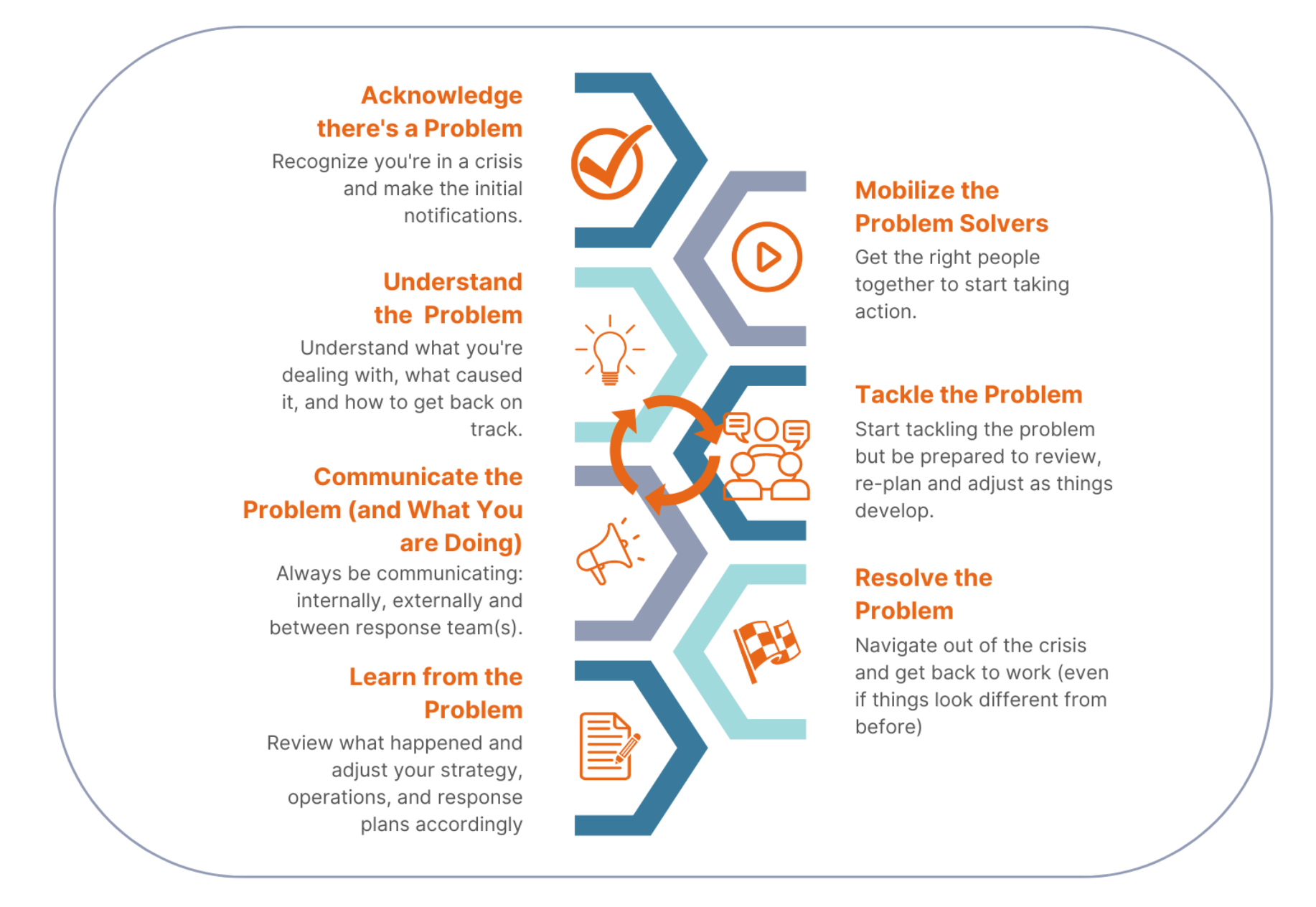 I want to share a simple framework for crisis response.
I want to share a simple framework for crisis response.
But, if you’re a crisis management professional or corporate communicator, you need to take a deep breath before you read this.
- You’ll want to tell me that you can’t simplify crisis response.
- You’ll want to tell me, ‘It’s not exactly like the standard’.
- You’ll want to tell me that this won’t work for your big clients.
I understand these concerns, so there’s no need to email me and tell me why I’m wrong.
But here’s the thing: this framework isn’t really for you. You’ve already got your own tools and templates, and your big clients have a ‘bespoke’ plan that you built for them using the relevant standard.
A Simple Framework For Crisis Management
This approach might be wrong for you, but if you’re part of a smaller organization – firms I’m calling SBMs: small but mighty businesses – you need a simple framework for crisis response. Something robust, clear, jargon-free, and logical.
 Something like this.All crises move through these seven steps: acknowledge, mobilize, understand, tackle, communicate, resolve and learn. The framework tracks this progression and indicates what you should focus on at each stage.
Something like this.All crises move through these seven steps: acknowledge, mobilize, understand, tackle, communicate, resolve and learn. The framework tracks this progression and indicates what you should focus on at each stage.
Some steps take longer than others. You’ll repeat some steps in a longer event (note the circles between Understand – Tackle – Communicate?). But overall, this is how your response to a crisis should play out.
This is the framework I’m using to build the CrisiDojo crisis management plans (CMP), and it’s working well: the structure is easy to understand, and each step is distinct from the others, helping you establish a process, know where you are, and what you should be doing.
Above all, it’s based on simple, clear concepts and ideas. Because when things are already difficult and complex, the last thing you want to layer on top is a complicated process that’s difficult to use. Instead, you need something simple that creates an environment conducive to high-quality decision-making and taking action.
The Six Things
Remember, the CMP isn’t to give you the answer to every situation or explain precisely what to do in each situation: it’s to tell you how to set things up so you can work out the solution yourself.
So the plan is there to help you get six things right:
Get the right people, with the right information, in the right place, at the right time, with the right resources to solve the right problem(s).
That’s what every CMP should do. It’s just that plans can get a bit out of hand and become unwieldy because there’s a tendency to make things too complex.
But that’s not necessary.
The Foundation for Success Isn’t Your Page Count
Something simple is fine because the quality and success of your response aren’t based on the page count of the CMP. Success is determined by the quality of the decisions and the speed at which the organization can execute them.
So the trick is to ensure that the CMP is an enabler, not a hindrance.
That means keeping it simple and straightforward.
You can see more about the CrisisDojo plan builder and try the free demo here.
Andrew Sheves Bio
Andrew Sheves is a risk, crisis, and security manager with over 25 years of experience managing risk in the commercial sector and in government. He has provided risk, security, and crisis management support worldwide to clients ranging from Fortune Five oil and gas firms, pharmaceutical majors and banks to NGOs, schools and high net worth individuals. This has allowed him to work at every stage of the risk management cycle from the field to the boardroom. During this time, Andrew has been involved in the response to a range of major incidents including offshore blowout, terrorism, civil unrest, pipeline spill, cyber attack, coup d’etat, and kidnapping.
He can be reached at: andrew@andrewsheves.com